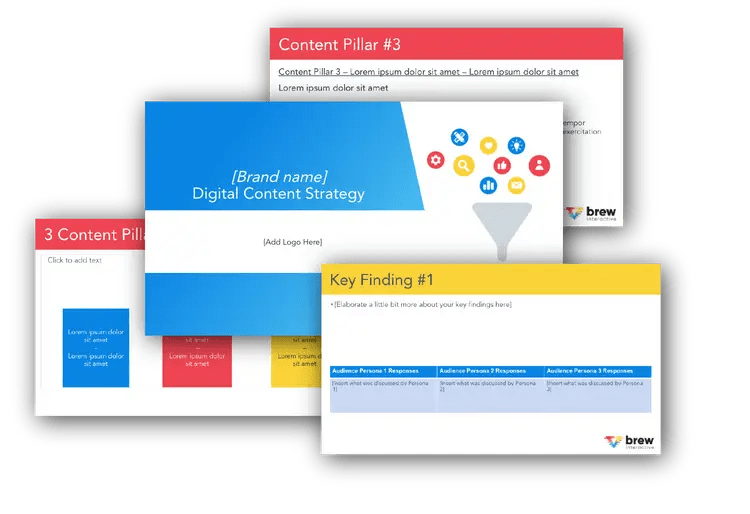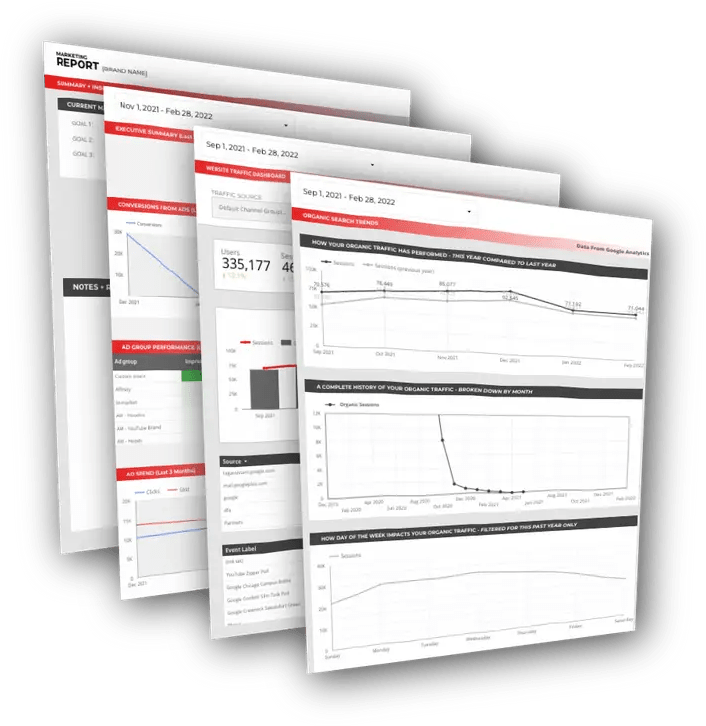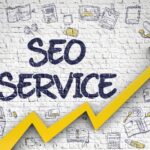Do you know what your lead-to-close rate is? Your MQL to SQL conversion rate? The average time it takes for a lead to work their way through your sales pipeline?
If you know the answer to these questions, are they where you’d want them to be And if not, do you know how to improve them?
If your sales and revenue aren’t where they need to be – the problem most likely lies in your sales funnel.
But which area and how to fix it?
This article will help you perform a sales audit and optimize your sales funnel by covering:
- Three funnel basics you need to understand to take your business to the next level
- How to audit your sales funnel to find holes
- Four common funnel issues and how to optimize them each
Sales Funnel Basics
Before diving into auditing, analyzing, and optimizing your sales funnel, let’s address a few basics.
The Differences Between Lifecycles, Pipelines, and Funnels
First, let’s talk about the difference between lifecycle stages, funnels, and pipelines. Many people have different definitions, but this breakdown might be the most helpful:
Lifecycle stages run all the way from stranger to customer. This is the full scope of anyone in your company’s audience. It overlaps sales and marketing.
Your sales pipeline generally refers to your sales process and the distinct stages. If someone asks you about your pipeline, they’re probably wanting to know how many prospects are in each stage at a particular time.
Your sales funnel generally refers to conversion rates along your pipeline over time. If someone asks about your sales funnel, they probably want a more big picture view of how often and how quickly prospects move through your pipeline over a longer period of time.
Different types of businesses will have different steps in their funnel. But in general, most will follow something along the lines of:
- Lead
- Qualified Lead
- Opportunity
- Customer
Regardless how you name your stages, just ensure they work for you, your product, and your process.
The Funnel is Evolving
The second thing we need to understand about sales funnels is that they’re evolving. Due largely to a rise in competition and more educated buyers, sales and marketing funnels are becoming much less linear.
They once looked this simple. But things are changing.
Jim Pouliopoulos, founding director of the Professional Sales program at Bentley University puts it well, “Today, it’s not enough for a salesperson to solve a known problem for a buyer; buyers can do most of their own problem solving before ever engaging a salesperson. Consumers gather information on their terms using the channels they prefer.”
“They can also leapfrog the buyer’s journey from start to finish because of many variables like urgency, price point, or an immediate business problem they are trying to address. Buyers don’t take a linear path—they take a ‘critical’ path that drives their decision-making process.”
As business leaders, we must recognize this fact and make concessions for non-linear customer journeys.
Marketing and Sales Alignment
The last thing we need to understand is the importance of marketing and sales being on the same page. Aligning your marketing and sales teams is vital to a healthy sales funnel.

Free B2B Content Strategy Template
Not sure where to start when it comes to your content strategy? Struggling to gain traction? Grab our free B2B content strategy template to help you document your strategy.
There must be a shared understanding around:
- What leads marketing should be attracting
- What makes a quality lead for sales
- The quality of leads sales is getting
- How leads should be segmented
- Which type of leads need to be nurtured further
An open line of communication between the two is crucial to sales success and revenue growth.
4 Areas of Your Sales Funnel to Audit
As you approach your sales audit, there are four key metrics we want to look at. They will give us an understanding of our funnel health and help us narrow down potential problems and opportunities.
But first, we need to choose a timeframe to audit. You might want to look at the last month, last quarter, or the last year. It’s not a bad idea to perform separate sales audits for each stretch of time.
Quantity of Leads
First: how many total leads are you getting?
This should be pretty easy to find. Just look for total leads over your given time period.
Of course, there’s no specific number that indicates success or failure. Ideally, you would be setting monthly or quarterly goals for this metric.
If you’re not setting regular goals, you should come back to this one after you’ve determined your typical conversion rate to get a better idea of what this number should be.
For example, if you need 100 closed deals each quarter to hit your revenue goals, and you convert leads at a 15% rate, then you know you need at least 1500 leads coming in each quarter.
Quality of Leads
How many leads make it through your first stage of qualifying?
Again, not every pipeline looks the same, so if the first step in your pipeline is MQL, then we’re looking for the percentage of MQLs that make it to SQL.
If your pipeline moves from Prospecting > Developing, then we’re looking for how many leads make it through that step.
Conversion Rate
How many leads eventually close, making it all the way through your sales funnel.
You’ll find this by dividing your closed deals by your total deals over a given time period, then multiply by 100. So if you had 10 closed deals last quarter and 100 total deals, your lead-to-close conversion rate was 10%.
You can get more granular by looking at the conversion rate of each stage to identify the biggest inhibitors of more closed deals.
Lead Velocity
How quickly are leads moving through your pipeline? What’s your lead flow look like?
This metric helps us determine your sales funnel efficiency. If you use SalesForce or HubSpot (and you track everything correctly), they should be able to tell you the average time a lead is in the pipeline.
If not, you’ll have to add up all of your lead’s time in the funnel and then divide by number of leads.
Is there a stage that many leads are stalling at? Are opportunities sitting on their proposals for far too long? Is negotiation taking up too many valuable sales resources?
How to Optimize Your Sales Funnel
Based on your sales audit, you should be able to identify at least one hole in your pipeline. We’ll address four potential problems your company may be facing. If all is good and you didn’t identify any holes in your analysis, congratulations! Your funnel is doing great.
1. Low Number of Total Leads
Plenty of companies struggle to generate leads. If this is the biggest gap in your funnel, you’re not alone.
If you have no clue where to start, check out our blog to learn more about lead generation.
But chances are, you do know a thing or two about lead generation and you’re just in a lull right now. Here are some potential reasons your leads could be down:
You aren’t getting your message in front of enough people
Some companies struggle just to get their message to enough people to generate leads. You may have great positioning, great messaging, and a good idea of what channels work for you, but you just need to scale your efforts.
If this is you, don’t be afraid to further invest in marketing to keep your funnel full – whether inbound or outbound.
You aren’t getting your message to the right people
On the other hand, you may be pouring investments into channels like outbound sales, SEO, and advertising – but the issue is your audience.
You have a misunderstanding of your target audience and buyer personas. So your message is getting out there, but not to your ideal customers.
Not long ago, we worked with a company who was struggling to make progress through digital channels. Rather than throwing a big investment into digital advertising or SEO right away, we first worked with them to clarify their buyer personas.
This critical first step helped us produce a campaign that led to revenue growth of 32%.
Make sure you’re intimately familiar with your buyer personas.
Your message isn’t resonating with your audience
You may have your personas pinpointed and your channels locked in, but your audience just isn’t taking action. Oftentimes, the reason is a misunderstanding or warped perception of your brand.
We worked with a B2B company not long ago who was struggling to generate leads. The last thing they suspected was that their target audience misunderstood what they brought to the table.
Rather than take their word about their buyer personas, we interviewed their customers directly – and learned that one persona completely misunderstood their product.
We were able to adjust our messaging to speak to this misunderstanding, and saw email open rates and leads more than double within two months.
If you’re struggling to generate leads, try to determine where you fall in those three categories.
If you need some more help, check out some of our recent blogs on generating leads:
- B2B Lead Generation Tips from Marketers Around the World
- 6 Channels for B2B Marketing (and How Most Marketers Get Them Wrong)
- 11 Advanced Ways to Generate Leads from Your Website
Pro Tip: Don’t make the mistake of assuming you understand your buyer personas and they understand you. Interview current and past customers to know for sure.
2. Low Quality Leads
The second funnel issue many companies have is low quality leads.
The top of your funnel is full of leads or MQL’s, but they don’t fit your ideal customer profile, resulting in a poor conversion rate to SQL’s (a poor qualification rate).
How can you fix it?
Sales and Marketing Alignment
If you’re having an issue with low quality leads, this is the place to start.
It’s vital that your sales and marketing teams are on the same page. Otherwise, there’s a good chance your marketing team is putting out content that is attracting the wrong kinds of leads.
Make sure you’re regularly working together to clarify:
- What leads marketing should be attracting
- What makes a quality lead for sales
- The quality of leads sales is getting
- How leads should be segmented
- Which type of leads need to be nurtured further
Warm Up Your MQLs with Nurturing Sequences
If you’re seeing a high number of leads falling off once they start sales conversations, it may also be because they’re not ready. They very well may be product or service fits, but they don’t yet realize they have a need.
Consider email nurturing sequences to warm these leads up and ready them for a sales conversation.
We worked with a company recently who was struggling to convert MQLs to SQLs, largely in part to the prospect not being ready for a sales conversation. We built them a customer journey that improved their MQL to SQL conversion rate by 67%.
Here’s what we did:
- First, we defined the customer journey for our client. We went into detail about what defined their buying stages and the goals for each stage.
- Then, we implemented an initial welcome email immediately after a prospect expressed interest. This email introduced our client’s company and gave them an opportunity to take a next step.
- If they didn’t take action from that email, we sent a follow-up reminder three days later.
- If the prospect still didn’t take action, we sent a final reminder four days later.
- Lastly, we set up automatic remarketing emails to go to prospects down the road who didn’t take immediate action, giving them an opportunity to schedule time with the sales team.
If your leads are consistently low quality, get your sales and marketing teams on the same page and consider further nurturing your leads prior to sales conversations.
Check out some of our blogs on email nurturing and lead management:
3. Poor Close Rate
If you’re closing at a low rate, your first step should be to get more granular in your analysis to identify which stage you’re losing the majority of prospects.
If you’re losing leads right when the sales qualification process starts, here are some things to consider:
- Lead Quality: If these leads are low quality, revisit the above section and consider working to better align your sales and marketing teams.
- Sales Reps: If it appears the leads are good fits, you may want to consider further evaluating your sales reps or investing in additional training for them.
- Product / Service: If the leads seem to be high quality, and your confident in the skills of your sales team, then it may be that your product is inferior. This isn’t a fun possibility to consider, but if it’s the case, you should address it before spending more resources on marketing and sales.
If you’re losing leads in the later stages of negotiations, consider the following:
- Sales Reps. Perhaps your sales team isn’t especially skilled in closing deals or negotiating. Consider using Gong.io or a similar platform to evaluate their performance and gain valuable insight.
- Pricing. At this stage of negotiations, pricing plays a big factor. Chat with your sales reps to determine how many lost opportunities were due to pricing.
- Product / Service. You can’t ignore the fact that your product or service may be the issue here.
To better pinpoint the issue, consider going further than just evaluating and talking with your sales teams. Many Closed / Lost contacts will be willing to have a follow-up conversation with you about why they didn’t agree to your proposal. These conversations can be incredibly valuable to your sales funnel.
Check out some of our blogs on sales efficiency:
- How to Develop a Successful Lead Flow Plan
- 13 B2B Sales Tools Your Team Should Be Using
- How to Create and Analyze Your Salesforce Sales Pipeline
4. Slow Moving Funnel
This isn’t always the end of the world. But nonetheless, a slow moving sales funnel can impact projections, cash flow, and require sales team resources that could be going to new sales.
How can you speed up a slow moving sales funnel?
Marketing Automations
We worked with a company recently who was struggling to speed up their sales funnel. Prospects were sitting in some stages for far too long. We helped them improve both their MQL to SQL conversion rate by 78% and their SQL to client conversion rate by 32% – speeding up the funnel in the process.
Here’s how we did it:
First, we set them up with Salesforce + Pardot and ensured their sales and marketing teams were on the same page about each stage of the buying cycle.
We then created automated email journeys in Pardot to nurture MQLs to SQLs more quickly. This was the progression we followed:
- Once contact opted into marketing communication, we sent them a welcome email introducing them to our client’s brand.
- We sent a second email on day two that further explained who our client was, what made them unique, and what they brought to the table. In this email, we inserted a CTA for the MQL to talk with a representative.
- If they didn’t opt-in there, we sent a third email with a client success story, along with the same CTA.
This journey warmed up their MQLs prior to talking with sales, not only resulting in a higher MQL to SQL conversion rate, but also speeding up leads through their funnel.
Sales Team Training / Intelligence
As mentioned in the above section, there may also be an opportunity to train your sales team to move prospects along more rapidly.
If your sales reps aren’t sure where the problem lies, consider having them record their conversations and calls. You can listen to them with your team to locate areas that need improvement.
Lastly, check out sales intelligence tools like Gong.io or Salesloft.
Perform Sales Audits Regularly
Sales audits are vital to your company’s success. If you don’t have a habit of reviewing your sales funnel and sales pipeline metrics on a regular basis, now is the time to start.
Document all your sales activity, audit it regularly, find your biggest opportunities, and make improvements. Dedicate your company to this cadence and you’ll find yourself with an effective sales funnel and growing business.

Free DataStudio Marketing Report
Improve your marketing reporting with our free DataStudio template that pulls data from Analytics, Google Ads, and Search Console to get a 360 degree view of your digital performance.





